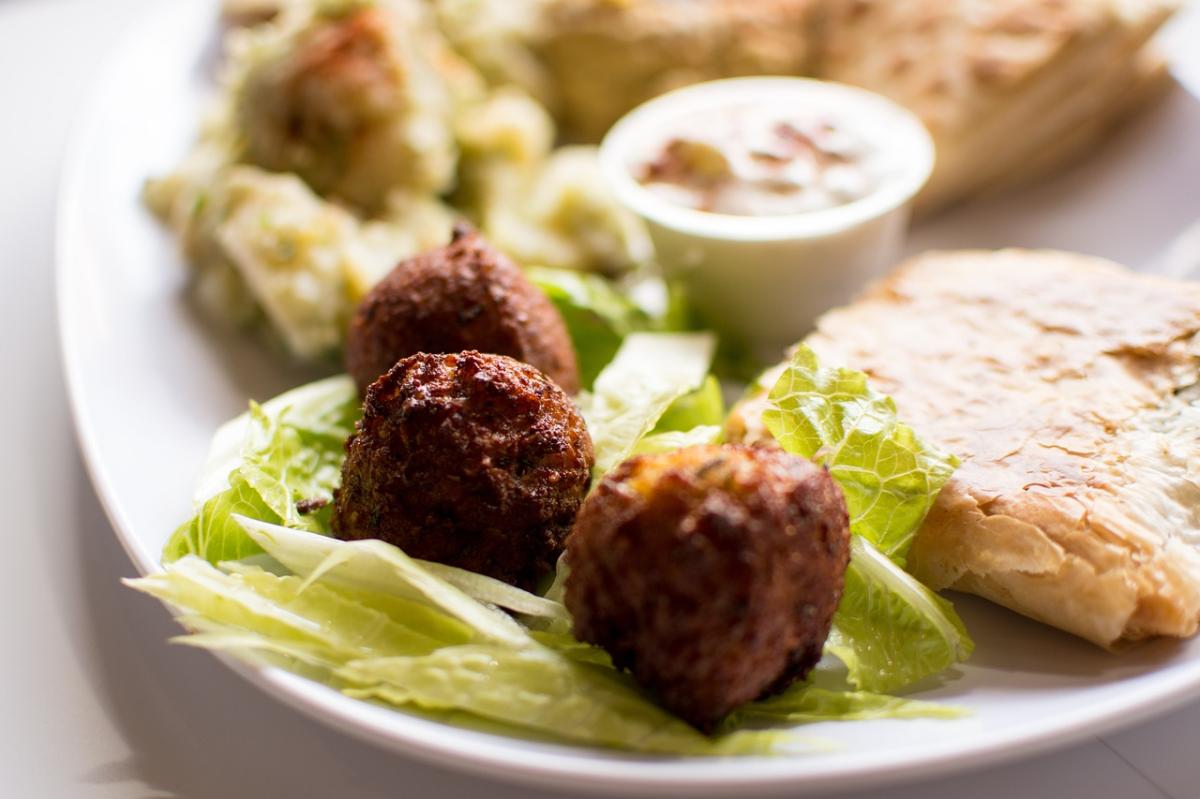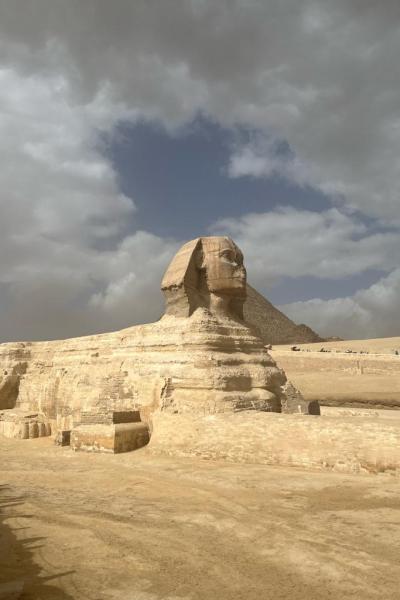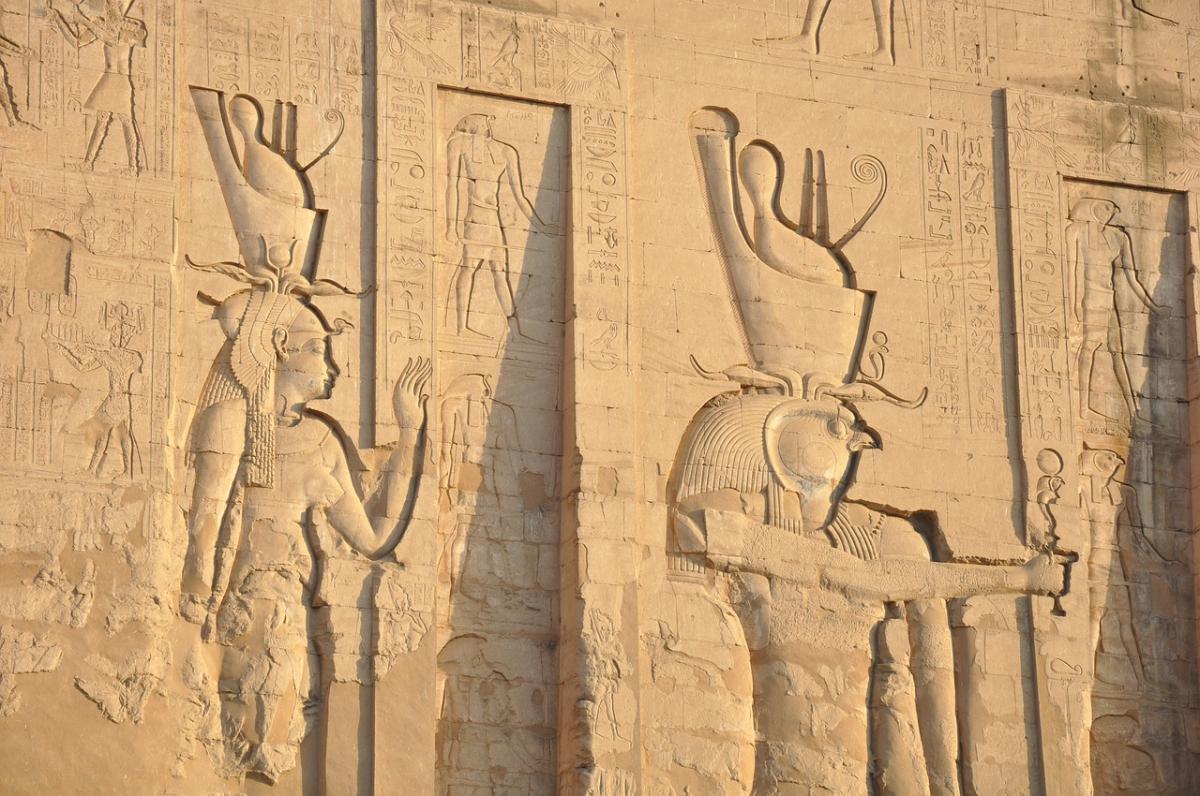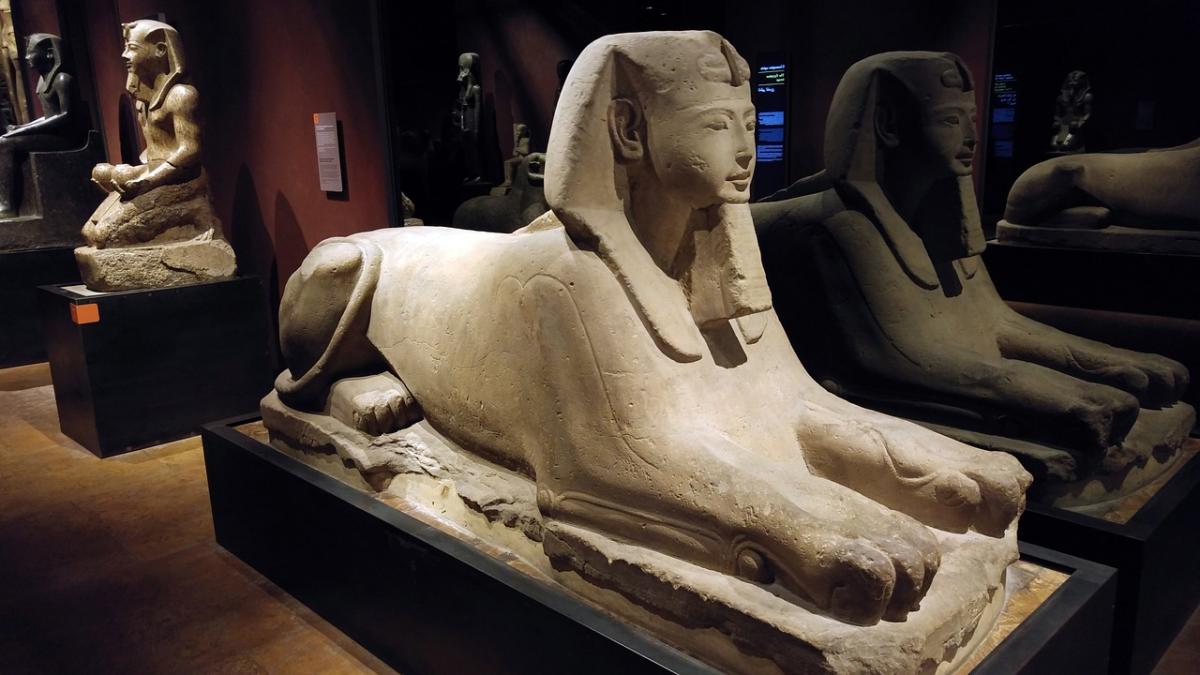
What is Traditional Egyptian Food? A Deep Dive into Dishes, Street Food, and History
To understand Egyptian food is to understand Egypt itself-a story of geography, history, and cultural fusion shaped by the life-giving Nile River. For millennia, the river’s predictable floods dictated the agricultural staples that would form the bedrock of the nation's diet. Positioned at a global crossroads, Egypt became a culinary melting pot where the traditions of ancient Pharaohs mingled with the influences of successive empires-Greco-Roman, Arab, and Ottoman-and the flavors of neighboring cultures, particularly from the Levant. The resulting cuisine is a rich tapestry that blends Mediterranean freshness, Middle Eastern complexity, and North African heartiness.
This long history has produced a fascinating culinary dynamic: an unwavering allegiance to ancient staples like bread and fava beans coexists with a remarkable capacity for absorbing and "Egyptianizing" foreign traditions. It is not a simple linear evolution, but a constant dialogue between a deeply rooted identity and external adaptation. Legumes, vegetables, and fruits from the fertile Nile Valley and Delta remain the cuisine's core, a testament to the land's enduring legacy.
The Ancient Foundations: Echoes of the Pharaohs in the Modern Kitchen
The bedrock of modern Egyptian cuisine was laid more than three millennia ago in the kitchens of the Pharaohs. The ancient diet, remarkably consistent over time, was centered on two pillars: bread and beer, consumed daily by all social classes. Bread, known as
Aish, is so fundamental that its name in Egyptian Arabic literally translates to "life". The ancient Egyptians are credited with inventing leavened bread, a revolutionary development that has shaped global food culture. Today, its direct descendant,
Aish Baladi, a rustic whole wheat flatbread, remains a staple at every meal, used as a utensil to scoop up stews and dips.
Alongside bread, fava beans (ful) provided the essential protein for the masses. The iconic breakfast dish Ful Medames has roots that stretch back to Pharaonic times, a nourishing and accessible meal for a population sustained by the land. The Pharaonic diet was predominantly vegetarian, a characteristic born from agricultural necessity that persists today. Vegetables like onions, garlic, lettuce, cucumbers, peas, and lentils were dietary mainstays. Meat, such as beef, goat, and poultry, was a luxury largely reserved for the wealthy elite or for special occasions.
The Nile was also a critical source of food, providing numerous species of fish. The ancient Egyptians developed sophisticated preservation techniques like salting, smoking, and drying to manage seasonal abundance, a practice that directly connects to the modern festival dish
Fesikh, a fermented fish eaten during the spring celebration of Sham El-Nessim.
The foundational elements of this cuisine are not merely a matter of historical preference but a direct consequence of the Nile's geography. The river valley, while incredibly fertile, offered limited arable land. This precious resource was far more valuable for cultivating crops like wheat and legumes than for the extensive grazing required for large-scale livestock farming. This geographical and economic reality cemented a plant-forward diet as the nation's culinary destiny, fostering a "cuisine of resourcefulness" that elevates humble, plant-based ingredients into celebrated national dishes.
A Confluence of Cultures: The Ottoman, Levantine, and Arab Imprint
While its foundations are ancient, Egyptian cuisine has been continuously enriched by waves of external influence. The Islamic conquest in the 7th century introduced foundational crops like rice, sugarcane, and citrus fruits, along with aromatic spices such as cinnamon and cloves that became hallmarks of Middle Eastern cooking.
Centuries later, the Ottoman Empire left a profound mark, particularly on Egypt’s more elaborate and courtly dishes. The Ottomans introduced a rich culinary tradition that included stuffed vegetables, which the Egyptians adopted and transformed into Mahshi. Grilled meats like
Kebab and Kofta, and decadent syrup-soaked filo pastries such as Baklava and Basbousa, also entered the culinary lexicon during this period. For centuries, the diet of Egyptian royalty and nobility was largely defined by Ottoman and European styles of cooking.
Egypt also shares a deep culinary heritage with the Levant, the region encompassing Syria, Lebanon, Palestine, and Jordan. Many dishes are common across these cultures, including Shawarma, rice-stuffed grape leaves, and various dips. However, Egypt's culinary strength lies not in simply borrowing dishes but in its unique ability to adopt and fundamentally transform them into something unmistakably its own. This process of "Egyptianization" is achieved through the substitution of local ingredients, the adaptation of spice profiles, and the integration of these dishes into distinct social rituals.
A clear example is the bean fritter. While known as falafel and made from chickpeas in the Levant, Egypt's Ta'ameya is crafted from fava beans. This single ingredient swap results in a fritter with a completely different character: a remarkably crispy exterior gives way to a moist, fluffy, and vibrant green interior. Similarly, the Ottoman concept of
Dolma (stuffed vegetables) became the Egyptian Mahshi, which utilizes a wider array of indigenous vegetables like cabbage and zucchini and features a signature filling of Egyptian short-grain rice and a fresh herb mixture of dill, parsley, and coriander known as khodra. This pattern of active reinterpretation defines Egypt's place within the broader regional cuisine.
| Culinary Concept | Egyptian Version (Name & Defining Features) | Levantine Version (Name & Defining Features) |
| Bean Fritter | Ta'ameya (طعمیة): Made with fava beans; fluffy, green interior, intensely herbaceous. | Falafel (فلافل): Made with chickpeas; denser, beige interior. |
| Stuffed Vegetable | Mahshi (محشی): Wide variety of local vegetables (zucchini, eggplant, peppers, cabbage, vine leaves); rice-khodra filling. | Dolma/Warak Enab (ورق عنب): Primarily grape leaves and zucchini; filling often includes more meat or different spices. |
| Layered Bread Dish | Fattah (فتّة): Crispy bread, rice, meat; defined by a potent garlic-vinegar broth and a garlic-tomato sauce. | Fatteh (فتّة): Often includes yogurt, chickpeas, and tahini, resulting in a creamier, tangier dish. |
| Jute Leaf Stew | Molokhia (ملوخیة): Finely minced leaves creating a thick, viscous soup; finished with an aromatic garlic-coriander ta'leya. | Molokhia (ملوخیة): Often uses whole leaves, resulting in a less viscous stew with a different texture. |
The Pillars of the Egyptian Table: Iconic National Dishes
Beyond the daily staples, a few iconic dishes stand as pillars of Egyptian home cooking and national pride. These are complex, beloved meals often reserved for family gatherings and celebrations.
Ful Medames: The Breakfast of a Nation
Ful Medames is more than a dish; it is the cornerstone of the Egyptian breakfast and a symbol of national identity. This slow-cooked stew of fava beans is ancient, with archaeological evidence of its consumption found in Pharaonic tombs, confirming its millennia-long history. Traditionally, the dried beans are simmered for hours overnight in a tall, narrow-necked copper pot called a
qidra or damasa, which allows for slow, even cooking.
The base recipe is simple, but it serves as a canvas for endless personalization. The cooked beans, either left whole or mashed to a creamy consistency, are typically seasoned with cumin, a generous squeeze of lemon juice, and a drizzle of olive oil. From there, toppings vary by region and personal preference, and can include chopped parsley, diced onions and tomatoes, creamy tahini sauce, hard-boiled eggs, or a dash of hot chili.
Molokhia: The Controversial Green Soup
Few dishes inspire as much passion and debate as Molokhia. This legendary green soup, made from the leaves of the jute mallow plant, is considered a national dish alongside Ful and Koshari. Its most notable characteristic is its unique, mucilaginous texture-often described as viscous or even slimy-which tends to be either deeply loved or intensely disliked.
In the classic Egyptian preparation, the fresh or dried jute leaves are stripped from their stems and finely minced, often with a curved, double-handled knife called a mezzaluna. The minced greens are then simmered in a flavorful broth, traditionally made with chicken or rabbit. Regional variations abound; in the coastal city of Alexandria, shrimp is often used, while in Port Said, fish is the protein of choice. The crucial final step, which gives the dish its signature aroma, is the
ta'leya: a mixture of minced garlic and ground coriander sizzled in hot ghee and poured over the soup at the last moment, releasing a fragrant cloud of steam.
Fattah: The Dish of Celebration
Fattah is the quintessential meal for celebration in Egypt. Its name, derived from the Arabic word for "crumbs," refers to the foundational layer of broken, toasted bread. This hearty, layered dish is the centerpiece of the table during major religious holidays for both Muslims and Christians, including Eid al-Adha, Eid al-Fitr, Coptic Christmas, and Easter.
The construction of Fattah is a ritual of layering flavors and textures. It begins with a base of crispy, toasted pieces of aish baladi. This bread is then soaked in a potent, aromatic meat broth-typically from lamb or beef-that has been sharply flavored with garlic and vinegar. A generous layer of fluffy, cooked white rice follows, and the dish is crowned with tender pieces of the stewed meat. To finish, a tangy garlic-tomato sauce is often drizzled over the entire assembly, adding a final layer of complexity.
The Pulse of the Nation: A Guide to Egyptian Street Food
To truly experience the soul of Egyptian cuisine, one must turn to its streets. Egyptian street food is a vibrant, democratic, and essential part of daily life, offering affordable, flavorful, and filling meals to people from all walks of life. From bustling city carts to tiny neighborhood stalls, these vendors serve up dishes that are deeply woven into the country's culinary fabric.
Koshari: The Ultimate Comfort Food
Often hailed as Egypt's national dish, Koshari is a carb-loaded masterpiece and a perfect example of the country's history of cultural fusion. Its origins are not ancient but are a product of 19th-century globalization. The dish is thought to have evolved from
khichri, a simple rice and lentil dish from India, which was brought to Egypt by the British. Italian expatriates in Egypt are believed to have then added pasta to the mix, creating the foundation of the dish we know today.
Koshari is a hearty bowl of layered rice, brown lentils, and macaroni, topped with chickpeas, a zesty tomato sauce, a garlic-vinegar sauce called dakka, and a generous pile of crispy fried onions. It began as humble food sold from street carts and has since become a staple in restaurants across the country.
Ta'ameya: The Original Falafel
Ta'ameya is Egypt's unique and beloved version of falafel. Unlike its Levantine cousins made from chickpeas,
Ta'ameya is made from dried fava beans that are soaked and ground with a vibrant mix of fresh herbs like parsley, coriander, and leeks. This gives the fritters their signature bright green, fluffy interior and an exceptionally crispy crust when fried. Stuffed into a warm pita with fresh salad, pickles, and a drizzle of tahini sauce, it is the quintessential Egyptian breakfast sandwich.
Kebda Eskandarani: The Taste of Alexandria
A fiery specialty from the coastal city of Alexandria, Kebda Eskandarani is not for the faint of heart. This popular street food consists of beef liver chopped into small, bite-sized pieces and flash-fried with a powerful marinade of garlic, cumin, ground coriander, and copious amounts of spicy green chilies. Finished with a generous squeeze of fresh lime juice, the intensely savory and tangy mixture is stuffed into a soft
fino (a bread roll similar to a small baguette) and served hot.
Hawawshi: The Egyptian Meat Pie
Hawawshi is Egypt's answer to the meat-filled pastry, a savory and satisfying street food classic. The dish consists of spiced minced beef or lamb, mixed with finely chopped onions, peppers, and fresh parsley, which is then stuffed into a pocket of
aish baladi. The entire "pie" is then brushed with oil and baked or grilled until the bread is golden and crispy. As it cooks, the fat from the meat seeps into the bread, infusing it with flavor and creating an irresistibly savory meal.
| Dish Name (Arabic) | Core Ingredients | Flavor Profile | How It's Served |
| Koshari (کشری) | Rice, lentils, macaroni, chickpeas, tomato sauce, fried onions | Savory, tangy, hearty, multi-textured | In a bowl, layered. |
| Ful Medames (فول مدمس) | Fava beans, cumin, lemon, olive oil, garlic | Earthy, creamy, savory | In pita bread as a sandwich or in a bowl. |
| Ta'ameya (طعمیة) | Fava beans, parsley, coriander, leeks | Crispy, fluffy, herbaceous, fresh | In pita bread with salad and tahini sauce. |
| Kebda Eskandarani (کبدة إسکندرانی) | Beef liver, garlic, cumin, chili, lime | Spicy, tangy, intensely savory | In a fino (baguette-like) roll. |
| Hawawshi (حواوشی) | Minced beef, onion, peppers, spices | Rich, savory, spiced, crispy | As a whole or half-stuffed pita, often wrapped in paper. |
Sweet Endings and Refreshing Sips: Desserts and Beverages
Egyptian desserts often showcase the strong influence of Ottoman and Levantine traditions, with a focus on nuts, honey, and syrup-soaked pastries.
Basbousa and Kunafa: Two of the most famous sweets are Basbousa and Kunafa. Basbousa is a dense, moist cake made from semolina batter, often flavored with coconut, baked until golden, and then drenched in a sweet sugar syrup.
Kunafa is a more elaborate dessert made with layers of shredded phyllo dough (kataifi) that sandwich a rich filling of soft, unsalted cheese or a thick cream known as eshta. After baking, it too is soaked in syrup and often garnished with crushed pistachios.
Umm Ali: Perhaps the most uniquely Egyptian dessert is Umm Ali, which translates to "Ali's Mother". It is a rich and comforting form of bread pudding, made by layering pieces of pastry (traditionally a thin, crisp bread called
roqaq, but modern versions use puff pastry or croissants) with nuts, raisins, and coconut flakes. The mixture is then soaked in sweetened hot milk, sometimes enriched with cream, and baked until the top is golden brown and bubbly. The dessert's origin is famously tied to a dark tale of 13th-century Mamluk court intrigue, where the original Umm Ali, wife of a sultan, allegedly had her rival murdered and commissioned this dessert to be created and distributed in celebration.
Beverages: To quench their thirst, Egyptians turn to a variety of refreshing drinks. Karkade, a tea made from dried hibiscus flowers, is a national favorite. Served either hot or cold, its vibrant crimson color and tart flavor are instantly recognizable. It is said to help lower blood pressure and is a common drink of hospitality. Equally popular, especially during the hot summer months, is fresh sugarcane juice, or
Asab. Pressed to order at street-side stalls, this frothy, sweet green juice is an intensely refreshing treat.
The Enduring Taste of Egypt
Egyptian cuisine is a narrative of resilience, a living history told through flavors and ingredients. Its identity is defined by a remarkable duality: a deep, unwavering connection to the ancient agricultural practices of the Nile Valley, and a simultaneous openness to the world that has allowed it to absorb and masterfully reinterpret centuries of culinary influences. The cuisine is built on the primacy of plants and legumes, a legacy of its geography that makes it one of the most vegetarian-friendly in the world. Yet, it is in the vibrant, democratic culture of its homes and streets where its true heart lies. From the humble breakfast of Ful Medames to the celebratory feast of Fattah, the Egyptian table is not just a source of nourishment; it is an edible museum, offering a taste of the nation's long, complex, and delicious history.



Egypt, a nation at the crossroads of Africa and the Middle East, boasts a culture that is as rich and layered as its millennia-old history . From the monumental legacy of the Pharaohs to the enduring influence of Coptic Christianity and the pervasive traditions of Islam, Egyptian culture is a vibrant...

Located in the heart of Cairo on Tahrir Square, the Museum of Egyptian Antiquities, commonly known as the Egyptian Museum, stands as the oldest archaeological museum in the Middle East . For over a century, it has been the worlds foremost repository of Pharaonic antiquities, offering an unparalleled...

Egypt, the land of pharaohs, ancient tombs, and the life-giving Nile, often conjures images of grand tours and luxurious cruises . However, this cradle of civilization is remarkably accessible for the budget-conscious traveler . With careful planning, you can experience its most iconic wonders without...